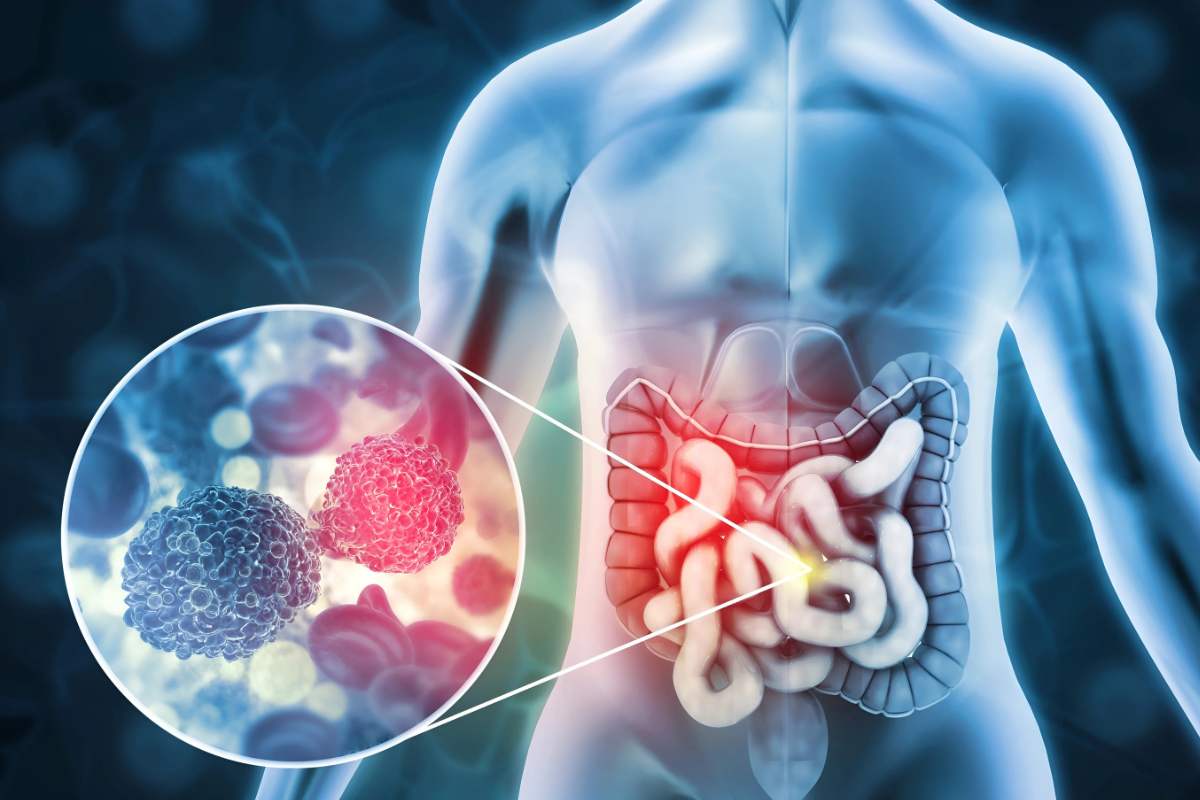There’s a health trend quietly emerging that is calling us to action: colon cancer, also referred to as colorectal cancer (CRC), is on the rise in populations globally, and, more frighteningly, it’s increasingly happening to younger adults than ever before. What was once considered a disease of older age is no longer the case. This is not merely a statistic; it’s a cry for awareness, knowledge, and active health management on our part.
This transition, specifically the increase in early-onset colorectal cancer (EOCRC) – generally CRC that occurs in people under 50 – is a mystery researchers are working to unravel. But though the ultimate “why” remains under study, the “what” is certain: we must speak of colon cancer, learn the dangers, know the signs, and accept the authority of screening and prevention.
This article seeks to deconstruct this troubling trend, discuss likely causes, detail symptoms and risk factors, and point out the important steps you can take to safeguard yourself and your loved ones.
The Changing Face of Colon Cancer: Alarming Statistics
For years, overall rates of colorectal cancer were decreasing in most developed countries, primarily due to growing participation in screening tests (such as colonoscopies) that can diagnose and excise pre-cancerous polyps before they become cancerous. Yet buried deep within this broader trend was a troubling counter-trend: an inexorable and considerable increase in diagnoses among adults under the age of 50.
Here are some points to consider:
- Early-Onset Rise: Reports from all over North America, Europe, and Australia have uniformly demonstrated an increase in EOCRC incidence since the mid-1990s. Rates have almost doubled in the under-50 age group for colon cancer and have quadrupled for rectal cancer, according to some reports.
- Generational Shift: Studies indicate that people born about 1990 have about twice the risk of colon cancer and four times the risk of rectal cancer as those born about 1950, if they live to the same age.
- More Advanced Stages: Alarming, younger adults tend to be diagnosed at more advanced, later stages of the disease. This could be a result of a reduced index of suspicion (in both patients and occasionally clinicians who do not first think about CRC in young individuals), resulting in delays in treatment and diagnosis.
- Global Phenomenon: Although many data points are from Western nations, parallel increases in EOCRC are also being reported elsewhere in the world, implying that factors other than strictly local environmental or lifestyle concerns may be involved.
These numbers make it clear: colon cancer is no longer just an “old person’s disease.” The growth in younger adults calls for a change in our mindset, our screening recommendations, and our individual health awareness.
What Exactly Is Colon Cancer?
Before we go further, let’s define what we’re discussing. Colorectal cancer begins in the colon (the large intestine) or rectum (the last part of the large intestine). Most start as small, noncancerous growths of cells called polyps, namely adenomatous polyps.
With time, often years, a few of them may grow into cancer. That slow process is good news in one way: it gives a window of opportunity for finding and removing the polyps before cancer arises. Screening tests are meant to identify these polyps or detect cancer in its earliest, most curable forms.
If not discovered, cancer cells may grow across the wall of the colon or rectum, invade lymph nodes near the area, and even spread (metastasize) to distant locations in the body, including the liver or lungs, where treatment becomes significantly more complicated.
Why the Increase? Investigating Possible Causes
This is the million-dollar question, particularly about the increase in early-onset cases. Although one single definitive answer is not available, evidence suggests a multifactorial interplay, probably varying to some extent between classic CRC and EOCRC:
Lifestyle Factors: These are strongly implicated, especially recent changes over the last few decades:
- Diet: The “Western diet” – red and processed meats, saturated fats, refined grains, and sugar, with low fiber, fruits, and vegetables – is a prime suspect. Low fiber intake can retard bowel transit time, which can lead to enhanced exposure to carcinogens. Preservatives such as nitrates and nitrites in processed meats can combine with amino acids to produce cancer-forming compounds.
- Obesity: Obesity rates have skyrocketed worldwide, paralleling the increase in EOCRC. Obesity is associated with chronic inflammation, insulin resistance, and hormonal alterations, all of which can foster a cancer-promoting environment. Fat tissue itself secretes hormones and inflammatory mediators that can support tumor growth.
- Sedentary Behaviour: Physical inactivity is a risk factor that is independent of others. Exercise maintains a normal weight, increases insulin sensitivity, decreases inflammation, and can increase bowel transit time. Our growing sedentary lifestyle is the cause of this risk.
- Alcohol Consumption: Excessive drinking is a confirmed risk factor for many cancers, including colorectal cancer.
- Smoking: Though usually associated most strongly with lung cancer, smoking is also an important risk factor for CRC.
Environmental Factors & Gut Microbiome:
- Gut Microbiome Disruption: There is increasing interest in the function of the trillions of bacteria that live in our gut. Diet, the use of antibiotics (particularly during childhood), and other environmental exposures can change the equilibrium of this microbiome (dysbiosis). Some bacterial species or dysbiosis may foster inflammation or have metabolites that facilitate polyp formation and cancer growth. This is a topic of active investigation by EOCRC.
- Environmental Exposures: Though more difficult to identify, researchers are investigating possible associations with certain environmental toxins, pollutants, or particular food additives, though hard evidence remains lacking.
Delayed Diagnosis in Younger Adults: Although not an etiology of the cancer, delayed diagnosis is a factor in the perception of increasing impact. In younger individuals, symptoms may be initially attributed to less severe conditions such as hemorrhoids or irritable bowel syndrome (IBS), resulting in important delays before a definitive diagnosis through colonoscopy.
Genetics: Although the vast majority of CRCs are sporadic (non-inherited), approximately 5-10% of them are associated with inherited genetic syndromes such as Lynch syndrome or Familial Adenomatous Polyposis (FAP). These established syndromes, however, do not explain the sudden increase in EOCRC. Perhaps other, as yet undiscovered, genetic predispositions combined with environmental stimuli.
It is important to realize that these factors most probably interact. A person may have a mild genetic predisposition that only materializes as cancer when compounded by a bad diet and a lack of exercise over many years. The increasing incidence of EOCRC indicates that early life exposures, even in the uterus, added to contemporary lifestyle factors, may be speeding up the process of carcinogenesis in vulnerable people.
Knowing the Signs: How to Identify the Symptoms
One of the greatest difficulties with colon cancer is that early stages do not present with any symptoms. This makes the importance of screening all the more critical. But as the cancer develops, it can cause signs and symptoms that must never be dismissed, no matter your age:
- A persistent alteration in your bowel movements: This involves diarrhea, constipation, or a change in the caliber (narrowing) or consistency of your stool that continues for longer than a few weeks.
- Rectal bleeding or blood in stool: This may look like bright red blood on the toilet paper or in the bowl, or cause stools to appear dark brown or black (older blood). Never think that bleeding is hemorrhoids without getting checked.
- Persistent abdominal pain: Cramps, gas, pain, or like your bowel does not empty all the way.
- Unintentional weight loss: Losing weight unexpectedly may be due to several causes, such as cancer.
- Fatigue or weakness: Frequently because of chronic blood loss and consequent iron deficiency anemia.
- The urge that you have to move your bowels and the urge is not relieved by it (tenesmus).
If you notice any of these symptoms, particularly if they persist or are a change from your usual, visit your doctor. Don’t wait and don’t ignore symptoms because you believe you are “too young” for colon cancer. Speak up and ask for an appropriate investigation if your symptoms persist.
Are You at Risk? Understanding the Factors
While EOCRC is on the rise, age remains the strongest risk factor for colorectal cancer in general; risk rises considerably after age 50. But it is important to know the entire range of risk factors:
- Age: Rising age (though the cut-off for “high risk” is essentially decreasing).
- Personal History: A history of colorectal polyps (particularly adenomas) or colorectal cancer greatly raises your risk of developing it again. In addition, a history of chronic inflammatory bowel diseases (IBD) such as Crohn’s disease or ulcerative colitis greatly raises risk after many years of disease activity.
- Family History: A first-degree relative (parent, sibling, child) with colorectal cancer or polyps raises your risk, particularly if they were diagnosed at a younger age (e.g., under 60). Having more than one affected relative increases the risk.
- Inherited Genetic Syndromes: Disorders such as Lynch syndrome (HNPCC) and FAP significantly raise lifetime risk. Genetic counseling and testing may be indicated in families with strong histories.
- Lifestyle Factors (as mentioned earlier): Unhealthy diet (low fiber, high red/processed meat), physical inactivity, obesity, smoking, and excessive alcohol consumption.
- Race and Ethnicity: In a few areas, some racial or ethnic groups (e.g., US African Americans) have higher rates of incidence and mortality, perhaps due to a complicated combination of socioeconomic factors, access to treatment, and possibly intrinsic biological differences. Ashkenazi Jewish heritage is also linked with a slightly increased risk.
- Type 2 Diabetes: People with type 2 diabetes are at higher risk for developing colorectal cancer. Knowing your risk profile is the first step in talking to your doctor about proper screening strategies.
The Power of Screening: Your Best Defense
Screening is perhaps our greatest weapon against colorectal cancer. It serves to:
- Prevent Cancer: By finding and removing precancerous polyps.
- Detect Cancer Early: By detecting cancer at an early stage when treatment is most effective and cure rates are the highest (more than 90% for localized disease).
Due to the rising rates of EOCRC, major health organizations in many countries (including the American Cancer Society and the US Preventive Services Task Force) have lowered the recommended age to start average-risk screening from 50 to 45. This is a critical change reflecting the new reality of the disease. If you are 45 or older, it’s time to discuss screening with your doctor, even if you don’t have symptoms. Those with increased risk factors will need to begin screening earlier and possibly more often.
Some typical screening options include:
- lonoscopy: Considered the “gold standard” by many. A flexible tube with a camera examines the entire colon and rectum. Polyps can be removed during the same procedure. Typically repeated every 10 years if normal and no polyps are found. Requires bowel preparation.
- Stool-Based Tests:
- Fecal Immunochemical Test (FIT): Picks up occult blood in the stool, which may be an indicator of polyps or cancer. Performed every year at home. If positive, colonoscopy is required.
- Guaiac-based Fecal Occult Blood Test (gFOBT): Older test also for blood, sometimes necessitating dietary restrictions. Typically performed every year. If positive, colonoscopy is required.
- Stool DNA Test (e.g., Cologuard): Identifies abnormal DNA from cancer or polyp cells, and blood. Every 3 years at home. If positive, needs colonoscopy.
Flexible Sigmoidoscopy: Less invasive than colonoscopy but looks only at the lower section of the colon (rectum and sigmoid colon). Every 5 years, possibly with FIT testing.
CT Colonography (Virtual Colonoscopy): Utilizes a CT scanner to generate images of the colon. Bowel prep is required. If polyps are detected, a regular colonoscopy will be necessary to remove them. Performed every 5 years.
The “best” test is the one that gets accomplished. Discuss advantages and disadvantages with your physician depending on your personal risk, individual preferences, and available resources.
Taking Control: Prevention Strategies
Although screening is essential for detection, prevention depends on lifestyle choices as well:
- Diet High in Fiber: Pile on the fruits, vegetables, whole grains, legumes, and nuts. Fiber keeps the digestive system in motion and can dilute or bind suspected carcinogens.
- Restrict Red and Processed Meats: Cut back on beef, pork, lamb, hot dogs, bacon, sausages, and deli meats. Replace with poultry, fish, or plant proteins.
- Maintain a Healthy Weight: Balance calorie intake with physical activity to prevent excess weight gain.
- Be Physically Active: At least 150 minutes of moderate-intensity or 75 minutes of vigorous-intensity aerobic activity per week, plus muscle-strengthening activity.
- Don’t smoke: If you are a smoker, quit. If you are not, don’t become one.
- Limit Alcohol Intake: If you consume alcohol, do it in moderation (less than one drink a day for women, less than two drinks a day for men).
- Get Enough Calcium and Vitamin D: Some research indicates that these nutrients might offer protection, but more studies are necessary. Consult with your physician if supplements are needed.
These lifestyle modifications provide general benefits to health in addition to decreasing the risk of colon cancer.
Hope on the Horizon: Treatment and Prognosis
Don’t lose hope if colon cancer is diagnosed. Treatment has come a long way and may include a combination of treatments:
- Surgery: The main treatment for colon cancer that is localized, to remove the tumor and surrounding lymph nodes.
- Chemotherapy: Treats cancer cells with drugs, frequently after surgery (adjuvant) to destroy remaining cells or for cancer that has spread.
- Radiation Therapy: Directs high-energy rays to kill cancer cells, most often employed in rectal cancer, commonly preceded by surgery.
- Targeted Therapy: Medicines that directly attack specific molecules of cancerous cell growth.
- Immunotherapy: Stimulates the body’s natural defense, the immune system, against cancer cells, most potent against some kinds of CRC and those with special genetic markers.
The survival for colorectal cancer largely depends on the stage of diagnosis. If diagnosed early (localized stage), the 5-year survival is greater than 90%. This dramatically falls if the cancer has reached distant organs. This dramatic difference underscores, yet again, the life-saving benefit of screening and early detection.
Conclusion: Awareness, Action, Advocacy
Increased colon cancer, especially among young adults, is a significant public health issue that needs to be addressed through a multi-pronged approach. It calls for increased awareness among the general public and clinicians, compliance with revised screening guidelines (beginning at age 45 for average-risk patients), and a concerted effort towards developing healthy living habits.
Don’t be afraid or embarrassed – get informed. Know your risk factors. Be aware of symptoms and get immediate medical help if they arise. Most importantly, discuss colorectal cancer screening with your physician – it may eliminate cancer or catch it early enough to save your life. The battle against colon cancer begins with knowledge and taking action. Be well today.








